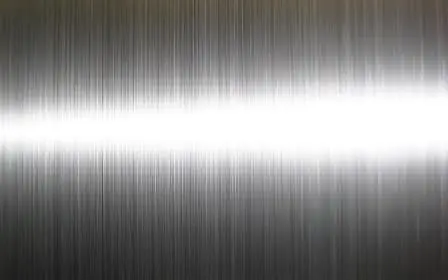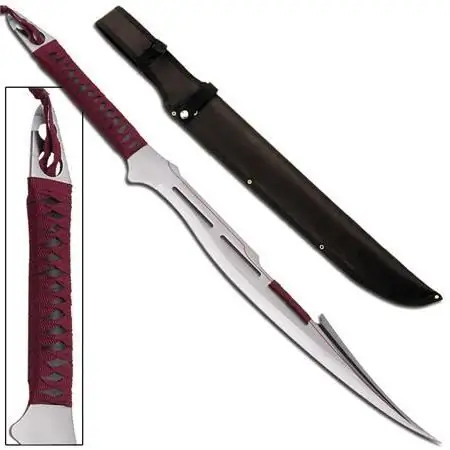2025 Author: Howard Calhoun | [email protected]. Last modified: 2025-01-24 13:10:30
Today, duplex steel is getting more and more popular. Practically all companies in the field of metallurgy are engaged in the production of this type of stainless alloy. You can read more about what duplex steel is and what advantages it has in this article.
General information

Duplex steel is recognized all over the world. What characteristics does she have? Firstly, the high strength of this material allows to reduce the final weight of any product. Secondly, it is famous for its enormous resistance to corrosion. This is especially noticeable when considering stress corrosion cracking resistance.
It is worth saying that at the moment the raw material is still not familiar to manufacturers, and therefore every few years conferences are held at which technical articles are considered on all the features of duplex steel. So far, despite the rather high interest in this type of product, the global market share is only 1-3%.
History of occurrence
It is worth noting that the idea of creatingduplex steel was born back in 1920. But the first material appeared only in 1930 in Sweden. The wide distribution and use of this type of raw material began only in the last decade. The main reason for this lies in the fact that during these years the production technology has been greatly improved. In particular, producers have been able to control their nitrogen content more precisely.
To understand the benefits and why duplex stainless steel was born, you need to understand the other two main types.
Austenitic alloys, which are AISI 304 or 08X18H10, as well as AISI 430 or 12X17 ferritic grades, are quite easy to manufacture. As their name implies, they consist mainly of austenite or ferrite. Although widely used, they have technical shortcomings.
Disadvantages of traditional steels

If we talk about austenitic steels, then the disadvantages include low strength, as well as low resistance to stress corrosion cracking. As for the ferritic material, its strength is slightly higher, but still "does not reach" the ideal. In addition, the weldability of steel deteriorates greatly with increasing material thickness, and becomes quite brittle at low temperatures.
Another small drawback of the austenitic alloy is the nickel content in the composition. This leads to a higher cost of the product, which, of course, no end consumer is happy with.
Duplex benefits
The idea of creating duplex stainless steel came from a desire to equate the ferritic and austenitic base in order to get a new, higher quality material. Approximately the same amount of ferritic and austenitic steel resulted in the following benefits:
- High strength. The yield strength range at 0.2% will be 400 to 450 MPa, which is 150 to 200 MPa more than can be seen with austenitic or ferritic alloys. This led to the fact that it is possible to reduce the thickness of the product, while not losing strength. And the decrease in thickness caused a decrease in the final mass. This is very important in the field of building structures, tanks and pressure vessels.
- What are the advantages of duplex steel besides strength? The weldability of the metal is quite good even with a large thickness.
- High impact strength. Much better than ferritic alloys. This is especially true when the ambient air temperature drops to -50, and sometimes to -80 degrees Celsius.
- High resistance to stress corrosion cracking. Austenitic materials are very prone to this defect. This parameter plays an important role in industries such as brewing tanks, concentrators, pool frames.
- Duplex steel boilers are much more reliable than austenite boilers.
Cracking

Currently regularsteel is susceptible to such a defect as corrosion cracking or SCC - Stress Corrosion Cracking. This type of corrosion usually occurs under certain conditions. The causative agent can be a strong tensile stress, elevated temperature (50 degrees Celsius above zero). And if we talk about swimming pools, then due to the constant exposure to water, this type of corrosion can occur even at 25 degrees.
Austenitic steel grades are quite affected by this defect. A ferritic alloy, as well as duplex stainless steel a890 3a according to ASTM and other grades, has greater reliability in this regard. The high coefficient of resistance allows this material to be used in the production of water heaters, brewing tanks, desalination plants. That is, where there is an increased temperature and contact with liquids.
It is completely forbidden to make pool frames from ordinary austenitic steels because of this defect. Previously, it was necessary to use an alloy with a very high nickel content, which led to an increase in the cost of the product. Today, duplex or super duplex steel can be used.
"Super" and "Hyper" duplex material
It is worth saying that if you add nickel to the ferritic chromium steel, you can get a mixed base structure. That is, it will contain both austenite and ferrite. As it has already become clear, it was precisely such a mixture that began to be called a duplex material. The prefixes "super" or "hyper" duplex steel indicate that the raw material contains an increasedthe amount of alloying components. This indicates even greater resistance to corrosion than conventional materials.
"Super" and "hyper" duplex steel is used quite actively in gas production equipment. In addition, raw materials are used in the food, chemical, construction and even medical industries.
Welding material

Despite the good weldability of this product, certain rules must be observed. Before starting welding, pay attention to the following:
- to ensure a good quality of penetration of the material, the gap at the root of the joint and the angle of cutting the edges should be made slightly larger than for ordinary steel;
- the joint, as well as the metal around this place, is recommended to be thoroughly cleaned of any contamination;
- only brushes made of metal wire with corrosion resistance can be used;
- welding electrode must be dry.
While welding duplex steel, follow these rules:
- It is very important to monitor such a parameter as heat input. It should not be too low or, conversely, too high. For ordinary duplex steel, a range of 0.5-2.5 kJ/mm should be adhered to during welding. In addition, the interpass temperature should be no more than 200 degrees Celsius.
- No scale should appear on the back of the weld. Here it is very important to choose the right gas that will protect the root of the seam. The most commonly used gas mixture for protective purposes is high-purity argon and hydrogen or nitrogen.
- Welding should only be carried out by a highly qualified person. This is due to the fact that in places of burns, the metal will greatly increase the tendency to corrosion, and there is also a high probability of cracking.
- During welding, do not make wide transverse vibrations of the electrode. This can lead to too much heat input, which will go against the rules.

Work after welding
There are certain guidelines to follow after welding.
- To ensure high corrosion protection of the weld metal, it must be thoroughly cleaned. It is necessary to completely remove the oxide film and remove all remnants of slag.
- Brushing work is done only by hand and only with a wire brush with corrosion resistance properties. If mechanical devices are used, this can lead to micro-tears in the seam area, which will reduce its strength.
- Most often, no heat treatment of the seam after welding is required.

Shortcomings of raw materials
Despite the spread of the material and its seemingly obvious and significant advantages, it still has not received universal recognition and, most likely, will never take the lead in the market. This is due to several disadvantages,which are worth knowing. Because of them, such an alloy will always be "niche".
Immediately it is worth starting with the high strength of the material. It would seem a significant advantage, but it becomes a huge disadvantage when it becomes necessary to process metal by mechanical means or pressure. Another disadvantage of high strength is a strong reduction in the possibility of plastic deformation. For this reason, duplex raw materials are not actually suitable for the production of any products that must have high ductility.
Even when the plasticity, it would seem, is at an acceptable level for work, you still have to make great efforts. For this reason, duplex steels and alloys for oil and gas fittings are not widely used.
The next drawback is the great technological complexity of smelting duplex stainless steel. Austenitic and ferritic material is much easier to melt. If the manufacturing technology is violated, especially during the heat treatment process, other phases will form in the material in addition to austenite and ferrite, which is completely undesirable. Most often, sigma phase or 475-degree brittleness occurs.

Unwanted phases in raw materials
Sigma phase is formed in such a product at 1000 degrees Celsius and above. Typically, these temperatures occur if the cooling process after welding or during production is not fast enough. In addition, the more alloying elements will be contained incomposition, the higher the probability of the appearance of such a phase. In other words, creating super duplex or hyper duplex steel is extremely difficult.
As for the 475-degree brittleness, it appears in the case of the formation of a phase called alpha-stroke. As the name implies, the most dangerous temperature is 475 degrees Celsius, but the problem can also appear at much lower values, approximately 300 degrees. Because of this, a maximum temperature restriction is imposed on the use of products from this type of raw material. Naturally, because of this, the scope of steel is narrowed even more.
Based on the foregoing, we can draw such a conclusion. Duplex steel grades are a good solution and replacement for standard materials, but in a very narrow scope.
Results
Duplex alloy is much less widely used than other types of metals. Nevertheless, it is popular in certain areas. Most often it is used in the petrochemical field, automotive industry and in the production of swimming pools. Excellent weldability, corrosion resistance and high wear resistance make this material a real find for many.
Recommended:
Food stainless steel: GOST. How to identify food grade stainless steel? What is the difference between food stainless steel and technical stainless steel?

The article talks about grades of food grade stainless steel. Read how to distinguish food stainless steel from technical
IL-96-400 aircraft: description, specifications and features

IL-96 begins its history in the 1980s. However, plans for the gradual replacement of obsolete Soviet aviation were not destined to come true. And although, according to its data, this machine is in many ways superior to the American Boeings, the new model found its application almost 20 years later, and only the Russian Air Force
Corrosion resistant steel. Steel grades: GOST. Stainless steel - price

Why metal materials break down. What are corrosion-resistant steels and alloys. Chemical composition and classification according to the type of stainless steel microstructure. Factors affecting pricing. Steel grade designation system (GOST requirements). Application area
Stainless steel corrugated pipe - overview, features, specifications and types

The article is devoted to stainless steel corrugated pipes. The characteristics of products, their features, types, nuances of installation, etc. are considered
440 steel - stainless steel. Steel 440: characteristics

Many people know 440 steel. It has established itself as a reliable, anti-corrosion, time-tested hard material, which is most often used for the manufacture of knives for various purposes. What is the secret of this alloy? What are its chemical, physical characteristics and applications?

